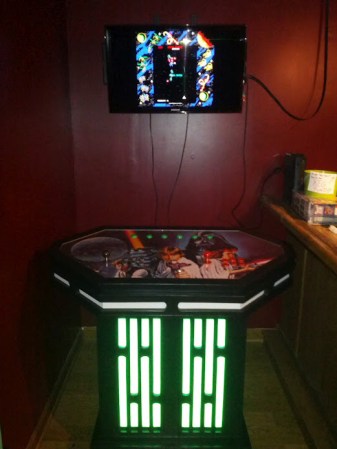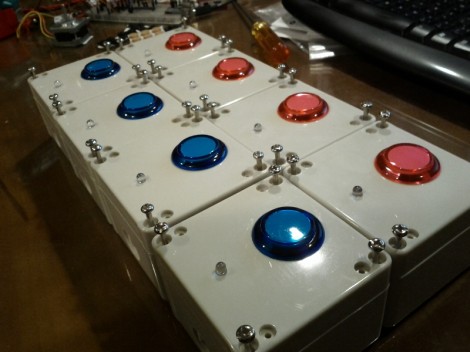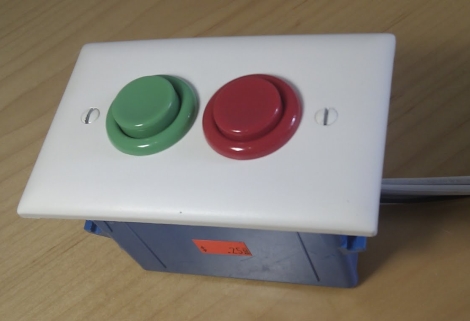
These arcade buttons started out as illuminated buttons. But they were bulb-based which only allowed for one color. [Jon] and his friends at the Leeds Hackspace wanted to find a way to retro fit them with RGB LEDs, without changing the buttons themselves. The hack lets them replace the bulb with an addressable circuit board. The really interesting thing about it is that there is no separate interface for addressing. The communications happen on the voltage bus itself.
After deciding to include a microcontroller inside the button they built a test version using some protoboard to see if it would fit. Indeed there was enough room and the proof-of-concept led to the factory spun board which you see above. It has pads for two of the four LED module feet on either side, with the opposite end of the board fitting into the bulb receptacle. The voltage line is pulsed to send commands to the microcontroller. We’re interested in finding out exactly how that works but we’ll have to dig through the code before unlocking the secret.















